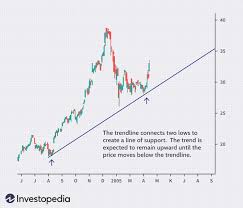Have you ever felt like navigating the stock market is like sailing through unpredictable waters? Sometimes it’s calm, but other times, you’re battling turbulent waves. The secret to staying afloat? Knowing where to look for guidance. Among the sea of financial data, two US charts investors need to pay attention to can act like a compass, pointing you toward safer and more profitable decisions.
In this article, we’ll dive into these charts, explain why they matter, and how you can use them to your advantage. Ready to navigate the market with confidence? Let’s get started!
Table of Contents
| Sr# | Headings |
|---|---|
| 1 | Introduction |
| 2 | Why Charts Matter in Investing |
| 3 | The First Chart: The S&P 500 Index |
| 4 | Understanding Market Trends |
| 5 | The Second Chart: US Treasury Yields |
| 6 | Bond Yields and Economic Health |
| 7 | How to Interpret These Charts |
| 8 | Common Mistakes to Avoid |
| 9 | When to Pay Closer Attention |
| 10 | Tools for Accessing These Charts |
| 11 | Real-Life Examples |
| 12 | Benefits of Staying Updated |
| 13 | Conclusion |
| 14 | Frequently Asked Questions (FAQs) |
Why Charts Matter in Investing
Imagine trying to drive a car blindfolded. Sounds absurd, right? Investing without referring to key market charts is just as risky. Charts give investors a visual representation of market trends, helping them identify patterns and make informed decisions.
Why Visual Data Works
Visual data simplifies complex information. Whether you’re a seasoned investor or just starting, charts allow you to:
- Spot trends quickly.
- Compare current data with historical performance.
- Make predictions based on patterns.
The First Chart: The S&P 500 Index
The S&P 500 is like a thermometer for the US stock market. This chart tracks the performance of 500 of the largest publicly traded companies in the US, offering a snapshot of the economy.
Why It’s Important
- Market Trends: It reflects overall market health.
- Investor Sentiment: Rising indices often indicate optimism, while declining ones signal caution.
- Diversification: It covers various sectors, giving a holistic view.
Understanding Market Trends
Bull vs. Bear Markets
Have you heard these terms before? A bull market represents rising prices, while a bear market signals a decline. The S&P 500 chart helps identify these phases, guiding investors on when to buy or sell.
Reading Historical Data
Historical performance often repeats itself. Recognizing patterns, like seasonal trends or reactions to global events, can give you an edge.
The Second Chart: US Treasury Yields
Treasury yields are like the heartbeat of the economy. They represent the return investors earn from US government bonds. The most-watched is the 10-year yield.
Why It’s Critical
- Economic Indicators: Rising yields may signal growth, while falling yields often point to economic slowdowns.
- Investor Behavior: Yields affect everything from mortgage rates to stock valuations.
Bond Yields and Economic Health
When Treasury yields rise, it usually means investors expect higher growth and inflation. On the other hand, falling yields often indicate a flight to safety, where investors are cautious about market conditions.
The Yield Curve
A normal yield curve slopes upward. However, when short-term yields surpass long-term ones (inverted yield curve), it’s often a warning sign of a recession.
How to Interpret These Charts
S&P 500:
- Look for support and resistance levels.
- Identify long-term upward or downward trends.
Treasury Yields:
- Monitor changes in the yield curve.
- Observe how yields react to Federal Reserve announcements.
Common Mistakes to Avoid
Overreacting to Short-Term Changes
Markets are volatile. Don’t let short-term fluctuations derail your long-term strategy.
Ignoring External Factors
Economic data, geopolitical events, and corporate earnings can influence these charts. Always consider the bigger picture.
When to Pay Closer Attention
During Economic Uncertainty
Charts are especially vital during recessions, elections, or major global events.
When Making Big Decisions
Planning to buy or sell major assets? Let these charts guide your timing.
Tools for Accessing These Charts
Free Resources
- Yahoo Finance
- Google Finance
- Bloomberg’s free data section
Premium Platforms
- Bloomberg Terminal
- Eikon by Refinitiv
Real-Life Examples
2008 Financial Crisis
The S&P 500 plummeted, signaling widespread economic issues. Simultaneously, Treasury yields dropped as investors sought safety.
2020 Pandemic
An initial crash in the S&P 500 was followed by a sharp recovery, thanks to stimulus measures. Treasury yields also hit record lows.
Benefits of Staying Updated
- Smarter Decisions: Informed choices lead to better outcomes.
- Risk Management: Anticipate and prepare for potential downturns.
- Confidence: Understanding charts boosts your confidence as an investor.
Conclusion
Investing without understanding key indicators is like sailing without a compass. The S&P 500 Index and US Treasury Yields are two charts investors should keep an eye on. By interpreting these charts effectively, you’re not just investing money—you’re investing in knowledge and strategy. So, why not start today and take control of your financial journey?
